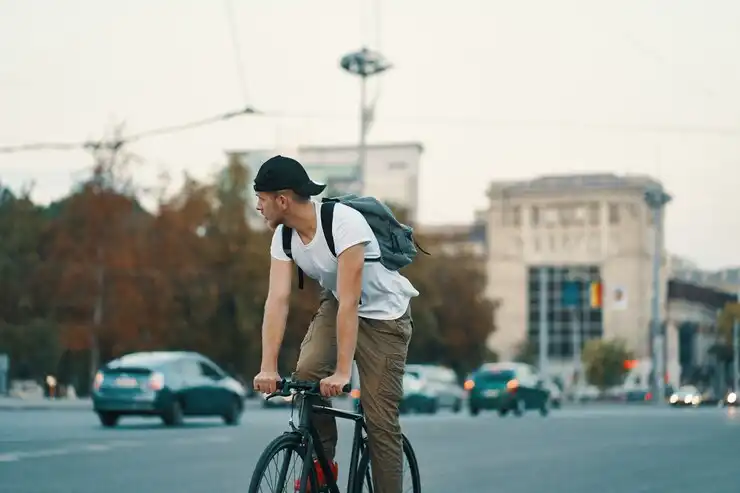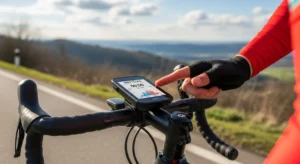Cycling through the city offers freedom, efficiency, and a refreshing way to commute. However, it also comes with risks. According to the National Highway Traffic Safety Administration (NHTSA), over 1,100 cyclists were killed in motor vehicle crashes in 2021. The good news? Many of these accidents are preventable. By adopting key safety habits, you can significantly reduce risks and enjoy a safer ride.
Whether you’re a seasoned cyclist or new to city biking, these essential safety tips will help keep you safe on the road:
Wear a Helmet: Your First Line of Defense
A helmet can reduce the risk of head injuries by nearly 60%. Always wear a properly fitted helmet that meets safety standards such as those set by the Consumer Product Safety Commission (CPSC) or ASTM International. If your helmet is over five years old or has been in a crash, replace it. For additional helmet safety guidelines, check out the CDC’s Bike Safety Tips.
Stay Visible to Stay Safe
Enhancing your visibility reduces the risk of accidents. Wear bright clothing—neon colors improve daytime visibility, while reflective materials are crucial for night rides. Use bike lights, including a white front light and a red rear light, even during the day. Adding reflective tape to your helmet, bike, and backpack further increases your visibility. Stay out of blind spots and make eye contact with drivers at intersections to ensure they see you. For more safety insights, visit NHTSA’s Tips on Bicycle Safety.
Follow Traffic Laws: Cyclists Have Rights Too
Cyclists must obey the same traffic laws as drivers. Stop at red lights and stop signs, ride with traffic, and use hand signals to indicate turns. Always yield to pedestrians at crosswalks. Knowing and following local cycling regulations can prevent accidents. You can check these laws at the League of American Bicyclists website.
Stay Focused and Avoid Distractions
City streets are unpredictable, so it’s crucial to stay focused. Keep both hands on the handlebars except when signaling, and avoid using headphones or texting while riding. Be mindful of hazards such as potholes, debris, and pedestrians who may unexpectedly cross your path.
Avoid Dooring Accidents
Dooring accidents happen when a driver or passenger opens a car door in a cyclist’s path. To prevent this, ride at least three feet away from parked cars and watch for signs of movement, like brake lights. In areas with heavy parking, slow down to allow more reaction time.
Be Cautious in Bike Lanes
While bike lanes are designed to offer cyclists a safer route, they can also present hazards. Cars may merge into bike lanes unexpectedly, pedestrians might step into your path, and debris or potholes can force you into traffic. Always stay alert when riding in bike lanes. For more safety tips, visit The National Bicycle Safety Network.
Navigate Intersections with Caution
Intersections are one of the most dangerous areas for cyclists. Reduce your speed as you approach, be on the lookout for right-turning vehicles, and avoid stopping in blind spots, especially near large trucks. Use hand signals early to indicate your turns, and stay vigilant.
Ride Defensively: Expect the Unexpected
To stay safe, assume that drivers may not see you. Avoid blind spots, especially near buses and trucks, and maintain a safe distance from vehicles. Be prepared for sudden lane changes, as not all drivers signal before moving.
Think Twice Before Riding on Sidewalks
Although riding on the sidewalk may feel safer, it often increases risk. Pedestrians can suddenly step into your path, and drivers at intersections may not expect a cyclist coming from the sidewalk. Sidewalks also have obstacles like signposts and uneven pavement. In many cities, sidewalk riding is illegal, so check your local laws before choosing this option.
Keep Your Bike in Top Condition
Regular maintenance prevents mechanical failures that could lead to accidents. Check your tires for proper inflation and wear, test your brakes, ensure your lights work, and lubricate your chain while inspecting the gears. A well-maintained bike is a safer bike.
Plan Your Route for Safety
Choosing the right route can make your ride safer. Opt for streets with bike-friendly infrastructure, lower traffic volume, and fewer intersections. Cycling apps like Google Maps or Strava can help you find the best and safest paths.
Know What to Do in Case of an Accident
Even with all precautions, accidents can still happen. If you are involved in a crash:
- Move to a safe area if possible.
- Check yourself and others for injuries.
- Call emergency services if needed.
- Exchange information with involved parties, including witnesses.
- Document the scene with photos.
- Seek medical attention, even if you feel fine initially.
Having a basic understanding of what to do in an emergency can make a significant difference in handling the situation properly.
Ride Predictably to Stay Safe
Keep a straight line while riding and avoid unnecessary swerving. Signal your turns early so that drivers and fellow cyclists know your intentions. Always pass on the left for safer overtaking. The more predictable your movements, the easier it is for others on the road to anticipate your actions.
Prevent Bike Theft: Lock It Up
Bike theft is common in cities, but you can protect your bike by using a U-lock, which is more secure than a cable lock. Always lock both the frame and wheels. Choose well-lit parking areas with high foot traffic and register your bike with local authorities if possible to increase the chances of recovery if stolen.
Ride Smart, Stay Safe
By following these safety tips, you can make city cycling a safer and more enjoyable experience. Whether you’re commuting or riding for fun, these practices help reduce risks and increase confidence on the road.
Now it’s your turn! Start incorporating these safety measures into your daily rides and encourage your friends and family to do the same. Share this guide with fellow cyclists and advocate for safer biking practices in your community. Together, we can make the streets safer for everyone—one ride at a time!




